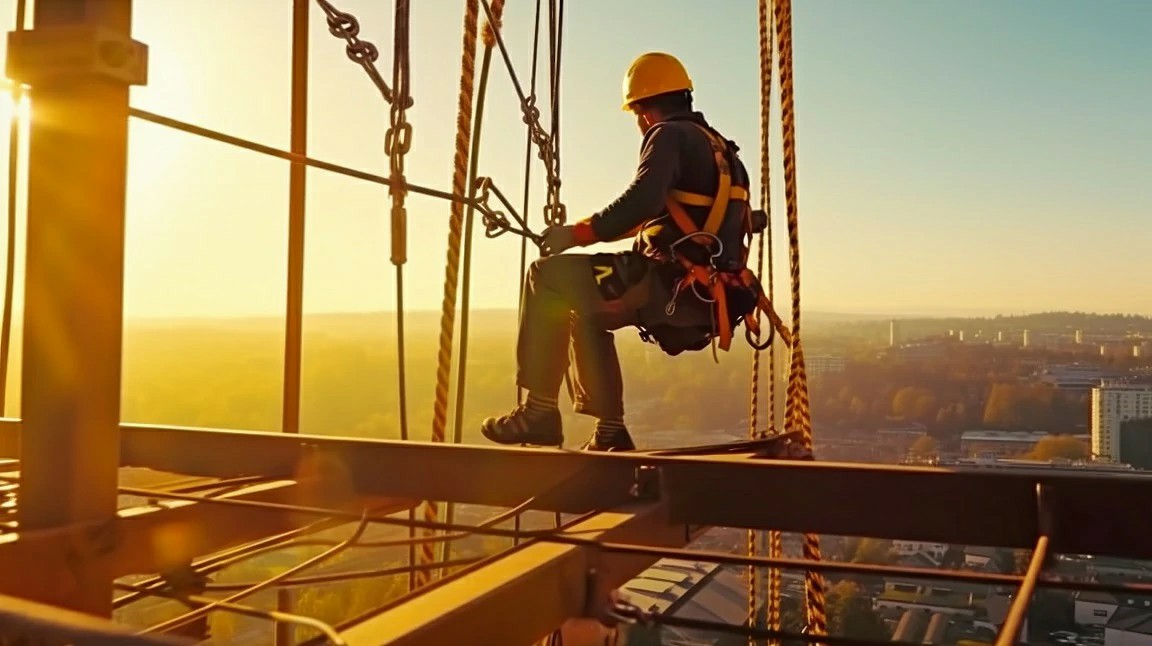Enhancing Working at Heights Safety Through Effective Communication
In high-risk professions where employees work at heights, the importance of effective communication cannot be overstated. Working at heights, whether on construction sites, maintenance at tall buildings, or other elevated workspaces, presents unique challenges. Integrating clear communication strategies not only enhances safety but also fosters a culture of teamwork and responsiveness that is crucial in preventing accidents.
The Impact of Communication on Safety in High-Risk Work Environments
Effective communication serves as a cornerstone for safety in any workplace, but especially so in environments where the risk of falls and accidents is heightened. Poor communication can lead to misunderstandings, delayed responses in emergencies, and inadequate compliance with safety protocols, which can significantly increase the risk of accidents.
Understanding Communication Types
- Verbal Communication: Clear verbal instructions and handovers ensure that every team member is aware of their duties and the hazards involved.
- Non-Verbal Communication: Body language and visual signals can complement verbal communication, especially when noise levels are high.
Role of Clear Instructions in Preventing Accidents
Providing clear and precise instructions is imperative for workers who are performing tasks at heights. This involves more than just saying what to do; it encompasses explaining why certain procedures are in place.
- Pre-Task Briefings: Regular pre-task meetings help set expectations and clarify roles, allowing team members to voice any concerns related to the tasks ahead.
- Use of Checklists: Implementing checklists for equipment checks and safety protocols ensures all safety measures are accounted for before tasks commence.
Teamwork as a Safety Enhancer
Effective teamwork hinges on robust communication. Workers must work together seamlessly to maintain safe practices when operating at heights:
- Build Trust: Develop trust among team members, which allows them to communicate openly about safety concerns without fear of judgment.
- Assign Specific Roles: Clearly defined roles help individuals understand their responsibilities, enhancing coordination among team members during operations.
Team Communication Strategies
- Daily Safety Meetings: Conducting daily meetings focuses on reviewing safety challenges and reinforcing the importance of communication in preventing accidents.
- Communication Tools: Utilizing radios or signaling devices can streamline communication, especially in noisy environments.
Emergency Signaling: The Need for Swift, Clear Responses
In the event of an accident, clear emergency signaling can make a life-saving difference. Workers at heights must be trained to recognize and react promptly to emergency signals.
- Establish Clear Signals: Use standardized hand signals that everyone understands, which can be vital when verbal communication is compromised.
- Emergency Response Drills: Conduct regular drills to ensure that all team members are familiar with emergency protocols, helping them respond quickly and effectively in crisis situations.
Best Practices for Ensuring Effective Communication in Working at Heights
To cultivate a workforce that prioritizes safety through effective communication, consider the following best practices:
- Invest in Training: Enroll team members in a Working at Heights Training program that emphasizes communication skills.
- Regular Reviews: Frequently assess communication protocols and seek feedback from workers about their efficacy.
- Incorporate Technology: Utilize tools such as smartphones or specialized apps to facilitate real-time updates and alerts during high-risk operations.
Real-World Applications: Case Studies
Case studies that demonstrate the power of effective communication in preventing workplace incidents provide tangible learning opportunities:
- Case Study 1: A construction site in Dublin experienced a significant fall prevention improvement after implementing structured daily briefings.
- Case Study 2: A maintenance crew in Galway reported a reduction in near-miss incidents after adopting standardized hand signals for communication at heights.
Conclusion: Commitment to Safety Through Communication
The importance of effective communication in enhancing Working at Heights safety can’t be emphasized enough. By fostering clear communication skills, encouraging teamwork, and practicing emergency signaling, employers can significantly reduce the risk of accidents.
For companies looking to emphasize safety in high-risk operations, investing in a Working at Heights Course Online is a proactive step towards ensuring a safer environment for all workers involved. Prioritize effective communication and watch your safety standards soar!
For more information, contact us at [email protected].



 349,500 Offered Certificates
349,500 Offered Certificates
 24/7 Online Training
24/7 Online Training
 Money Back Guarantee
Money Back Guarantee
 Fully Accredited Courses
Fully Accredited Courses
